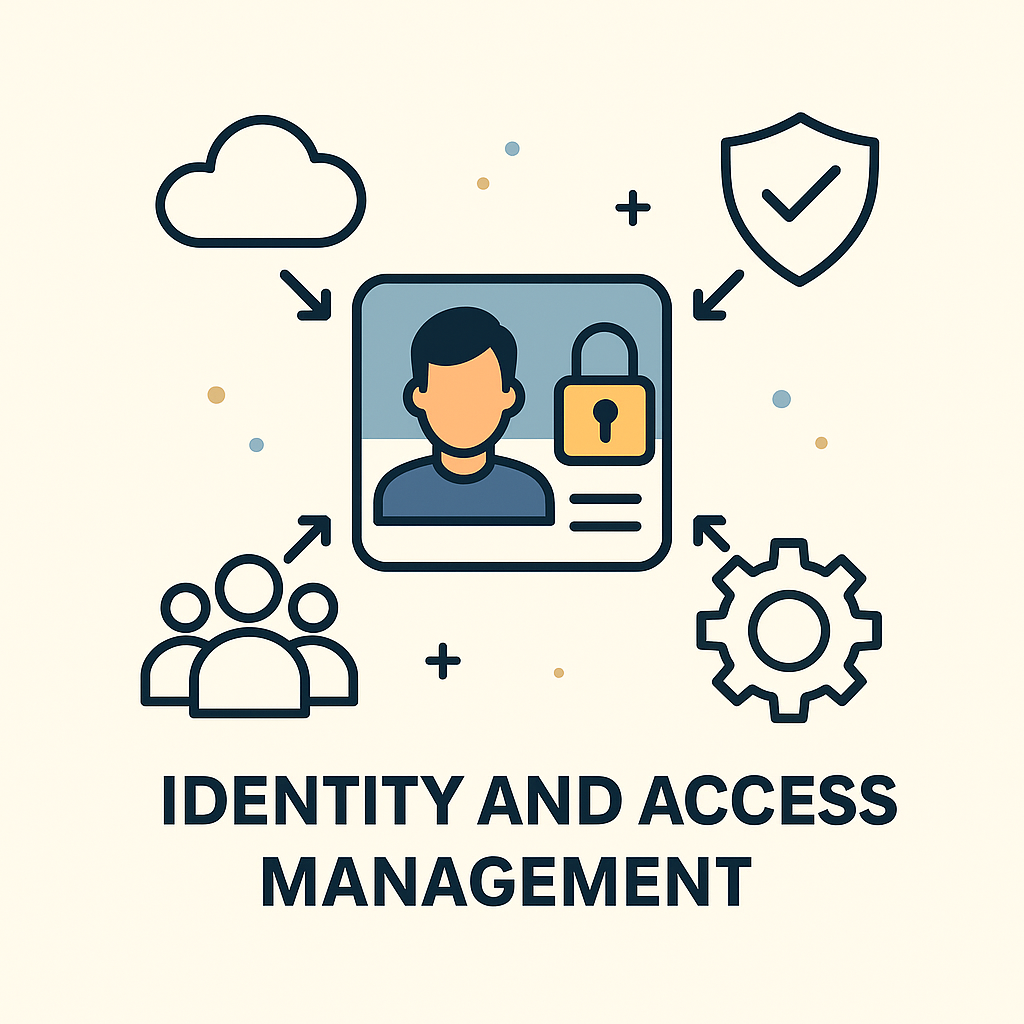Identity and Access Management (IAM) is a framework of policies, processes, and technologies that facilitates the management of digital identities and controls user access to critical information within an organization.
Key Components:
● Identification ➢ Process of recognizing a user or system (e.g., by username, ID, or biometric data).
● Authentication ➢ Verifies the identity of a user (e.g., using passwords, OTPs, biometrics, or multi-factor authentication – MFA).
● Authorization ➢ Determines what an authenticated user is allowed to do (e.g., read-only access, admin privileges).
● Access Control ➢ Enforces the permissions granted (e.g., Role-Based Access Control – RBAC, Attribute-Based Access Control – ABAC).
● Audit and Monitoring ➢ Tracks user activity to detect unauthorized access or anomalies. Common IAM Technologies:
● Single Sign-On (SSO)
● Multi-Factor Authentication (MFA)
● Directory Services (e.g., Active Directory, LDAP)
● Privileged Access Management (PAM)
● Identity Federation (e.g., SAML, OAuth, OpenID Connect)
Role of IAM in Digital Forensics Identity and Access Management (IAM) plays a crucial role in Digital Forensics by providing structured control over user identities and their actions within an IT environment. When a security incident occurs, forensic investigators rely on IAM systems to gather accurate, reliable evidence of what happened, when, and who was involved.
● Helps trace user actions for forensic analysis IAM logs provide detailed records of who accessed what system or file, when they did so, and what actions they performed. These records are critical for forensic analysts to reconstruct the sequence of events during an incident.
For example:
❖ If sensitive data is leaked or deleted, IAM logs help identify the specific user account involved.
❖ IAM systems record login/logout times, IP addresses, and access patterns, making it easier to trace insider threats or account compromises. Such traceability helps establish the chain of events, which is essential in both technical analysis and legal proceedings.
● Assists in incident response and legal investigations During a cyber incident, such as a breach or data theft, IAM plays a key role in the incident response process by:
❖ Quickly identifying compromised accounts or unauthorized access.
❖ Helping responders determine whether access was granted legally or maliciously.
❖ Enabling account lockdowns or revoking permissions in real time to prevent further damage. Additionally, forensic experts can use IAM records to support legal investigations by providing timestamped, tamper-proof logs that show user activity, aiding in proving intent or involvement in a cybercrime.
● Supports evidence collection by maintaining logs of access and activity IAM systems automatically generate and store logs that track all user activities. These logs act as a primary source of evidence in digital investigations. They include:
❖ Authentication logs: Who logged in and when.
❖ Authorization details: What resources were accessed.
❖ Failed login attempts: Indicating possible brute-force or hacking attempts.
❖ Privilege escalation records: Identifying if a normal user gained admin access. Such logs must be stored securely and meet legal standards of integrity and admissibility in court. Proper log management ensures that evidence is complete, consistent, and credible.

